Posts Tagged ‘Giotto’
-
AN UNEXPECTED VISIT
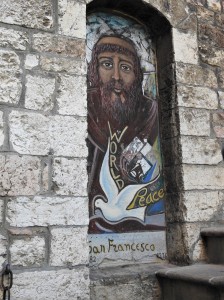 Francis Bernardone came upon the abandoned church of San Damiano in Assisi by accident. He was searching for a place to meditate to find a way forward for his life, when he entered the church and saw a crucifix. As he prayed earnestly in front of it, he heard a voice telling him, “Francis, go and repair my church which, as you see, is all in ruins!” This brief moment changed not only the man’s life but even his birthplace, the Catholic Church, and the lives of many others. An unexpected visit to Assisi proved that the timeless appeal of this instant still prevails.
Francis Bernardone came upon the abandoned church of San Damiano in Assisi by accident. He was searching for a place to meditate to find a way forward for his life, when he entered the church and saw a crucifix. As he prayed earnestly in front of it, he heard a voice telling him, “Francis, go and repair my church which, as you see, is all in ruins!” This brief moment changed not only the man’s life but even his birthplace, the Catholic Church, and the lives of many others. An unexpected visit to Assisi proved that the timeless appeal of this instant still prevails.Dropping by at Assisi for a few hours while exploring the surrounding towns, I found myself getting absorbed in the spiritual atmosphere of this medieval location which has earned its place in the UNESCO list of World Heritage Sites for its influence on religious expression and Europe’s art history. Although it was anticipated that I would visit some churches, I was blown away by the monumental beauty of the basilicas, the medieval character of the town, the intriguing archaeological structures and the boundless feeling of serenity.
The Papal Basilica of St Francis of Assisi dominates the town. It constitutes two churches which are known as the lower and the upper churches. Whereas the lower church is austere and sombre, symbolising the humanity and humility of the saint, the upper church is high vaulted, airy, and widely illuminated to resemble his sanctity and glory. The arcades that line the open square as you approach the basilica were originally used to shelter and feed medieval pilgrims. Nowadays, these offer refuge from the natural elements to the numerous visitors who come to Assisi.
 According to legend, the area on which this basilica was built was originally considered disgraceful since it was a place for public execution. Francis chose it as his burial place because he considered himself as the worst sinner. Today, this blessed location which holds within it the venerated remains of the saint is renowned as the ‘Hill of Paradise’.
According to legend, the area on which this basilica was built was originally considered disgraceful since it was a place for public execution. Francis chose it as his burial place because he considered himself as the worst sinner. Today, this blessed location which holds within it the venerated remains of the saint is renowned as the ‘Hill of Paradise’.The interior of the basilica is an awesome masterpiece which bursts into your senses. Never have I seen such colourful splendour which reaches from top to bottom with frescoes done by leading artists of the 13th century, such as Cimabue, Giotto, Simone Martini, and Pietro Lorenzetti. In contrast, the cruciform crypt of St Francis located deep beneath the two-levelled basilica, is raw and simple. A large open pillar contains the roughly hewn stone sarcophagus which holds the blessed remains of the saint. In the four niches positioned at each angle facing the tomb lie the four disciples of St Francis: fra Leone, fra Masseo, fra Rufino and fra Angelo.
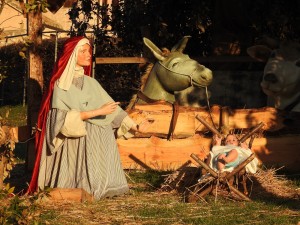 Even though Christmas celebrations were long over, the Christmas spirit was still very present in Assisi. An exhibition of traditional cribs animated the silent corridors of the friary which is built adjacent to the basilica. Likewise, a large crib with numerous life-size figures gave life to the wide-open area in front of the upper church.
Even though Christmas celebrations were long over, the Christmas spirit was still very present in Assisi. An exhibition of traditional cribs animated the silent corridors of the friary which is built adjacent to the basilica. Likewise, a large crib with numerous life-size figures gave life to the wide-open area in front of the upper church.The main street named after St Francis leads from the basilica to the centre of the town. Like any pilgrimage site, Assisi has become highly commercialized, flooded with souvenir shops which sell all types and all sizes of mementos that depict the saint. Various hotels offer hospitality to the pilgrims and visitors who opt to relish this medieval town’s atmosphere for longer. The elegantly restored 13th century Santa Caterina Monastery, now known as Nun Assisi Relais & Spa Museum, has been turned into a minimalist-styled hotel, and is an unparalleled destination.
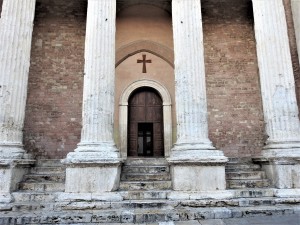 The main square, Piazza del Comune, was always an important point in the town. This is evident by the presence of a Roman temple which is the focal point of the square. Built in the 1st century BC, the imposing temple was originally attributed to the goddess Minerva due to the finding of a female statue. However, recent archaeological discoveries in the area pertaining to other gods have created doubts about which god was honoured by this stately structure. The façade of the temple, with its six huge Corinthian columns supporting the architrave and a small pediment, has now been preserved. The pagan building which is also a UNESCO World Heritage Site serves as a bizarre entrance to the church which it now houses, Santa Maria sopra Minerva.
The main square, Piazza del Comune, was always an important point in the town. This is evident by the presence of a Roman temple which is the focal point of the square. Built in the 1st century BC, the imposing temple was originally attributed to the goddess Minerva due to the finding of a female statue. However, recent archaeological discoveries in the area pertaining to other gods have created doubts about which god was honoured by this stately structure. The façade of the temple, with its six huge Corinthian columns supporting the architrave and a small pediment, has now been preserved. The pagan building which is also a UNESCO World Heritage Site serves as a bizarre entrance to the church which it now houses, Santa Maria sopra Minerva.References to St Francis are present wherever you go in Assisi. Niches, wall paintings, and statues of his parents Pietro di Bernardone and Madonna Pica, continually remind you that this is the birthplace of the saint. Nevertheless, the curious visitor can still encounter offbeat locations such as art galleries, tartufo shops, and traditional cuisine.
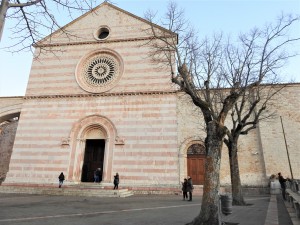 My visit ended at the Basilica of St Clare. Interestingly, the structure of its façade strongly imitates the upper church of the Basilica of St Francis, just how St Clare followed St Francis. Although far from the exuberant quality which one finds in the Basilica of St Francis, this church is still beautifully adorned. The ceiling of the chamber which houses the tomb of St Clare is pleasantly decorated with a blue sky filled with shining stars.
My visit ended at the Basilica of St Clare. Interestingly, the structure of its façade strongly imitates the upper church of the Basilica of St Francis, just how St Clare followed St Francis. Although far from the exuberant quality which one finds in the Basilica of St Francis, this church is still beautifully adorned. The ceiling of the chamber which houses the tomb of St Clare is pleasantly decorated with a blue sky filled with shining stars.The humbler nature of this basilica does not diminish its respect or importance. The Crucifix Chapel located inside protects within it the Byzantine cross which was originally at the ruined church of San Damiano. On the other hand, the Chapel of the Blessed Sacrament occupies the area of the ancient Church of St George, in which both St Francis and St Clare were buried until their basilicas were constructed.
A splendid sunset welcomed me as I stepped out in the square of the Basilica of St Clare from where I could enjoy a fantastic view of the surrounding area. Rocca Maggiore castle hovered over the town and bid me to visit, while at a distance, the Renaissance Basilica of St Mary of the Angels which houses the Porziuncola, the most sacred place for the Franciscans, reminded me that there was so much more to discover.
(This feature was published in the SENIOR TIMES issued with The Times of Malta dated 15th February 2019)
-
A Traditional Crib
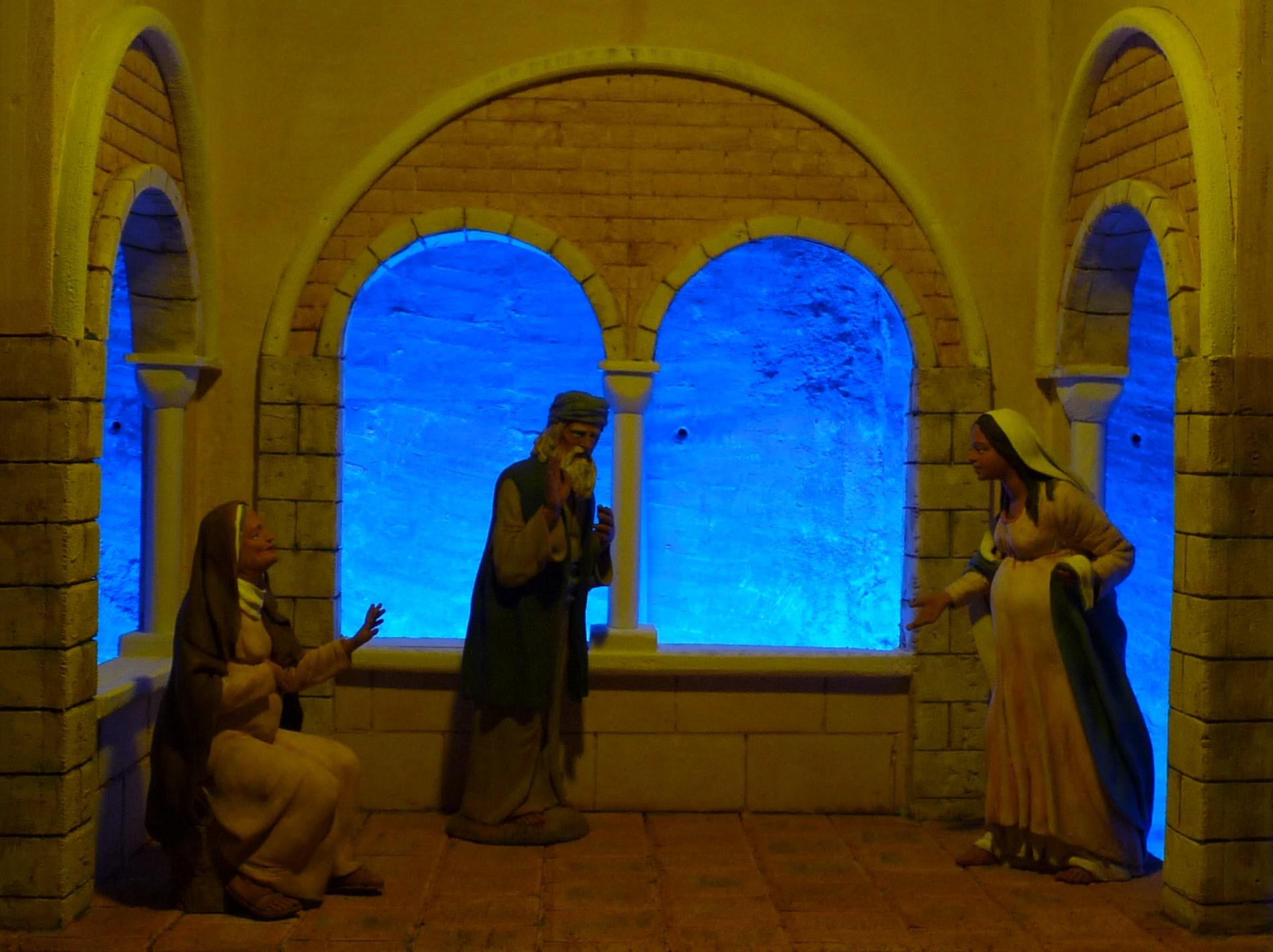
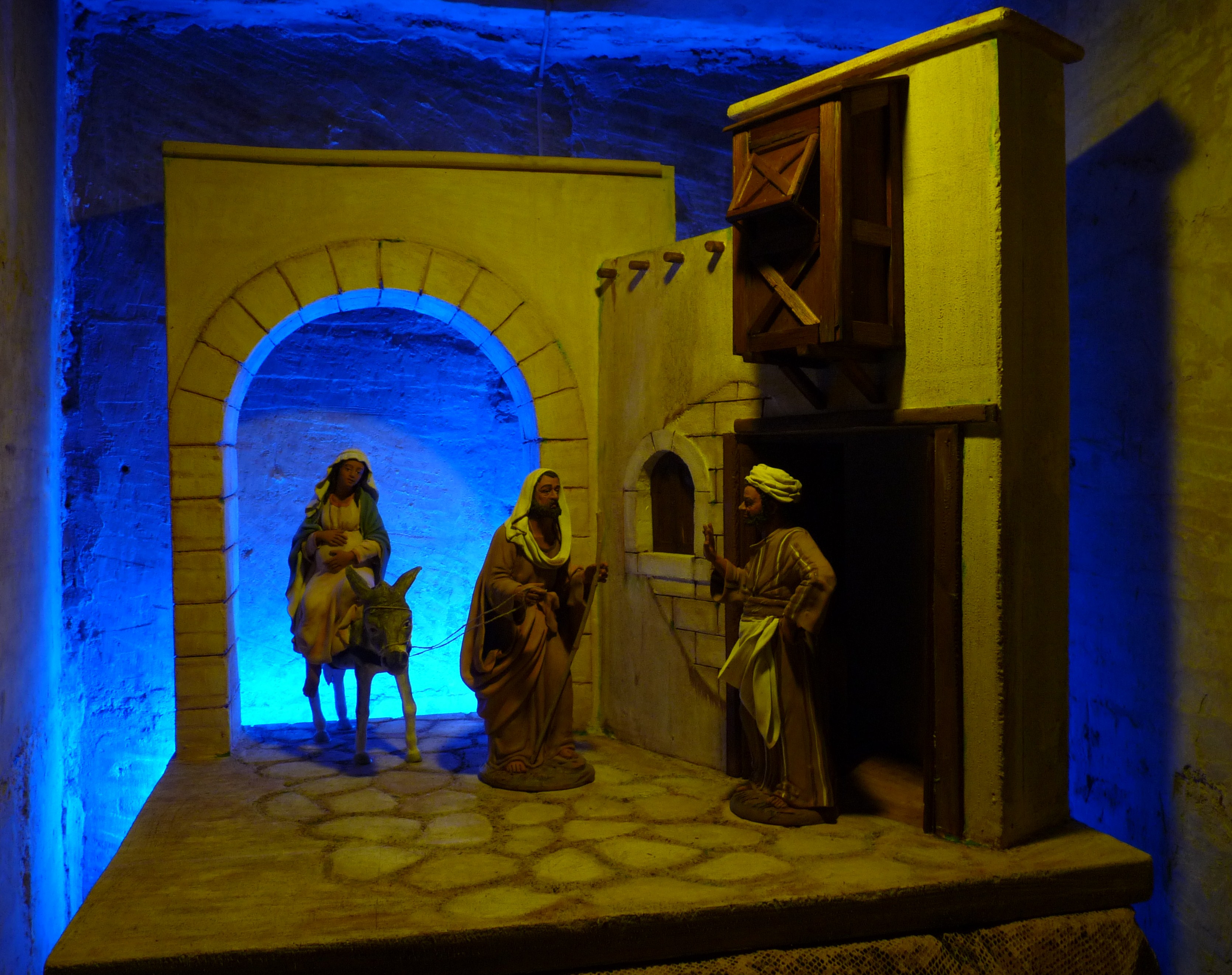
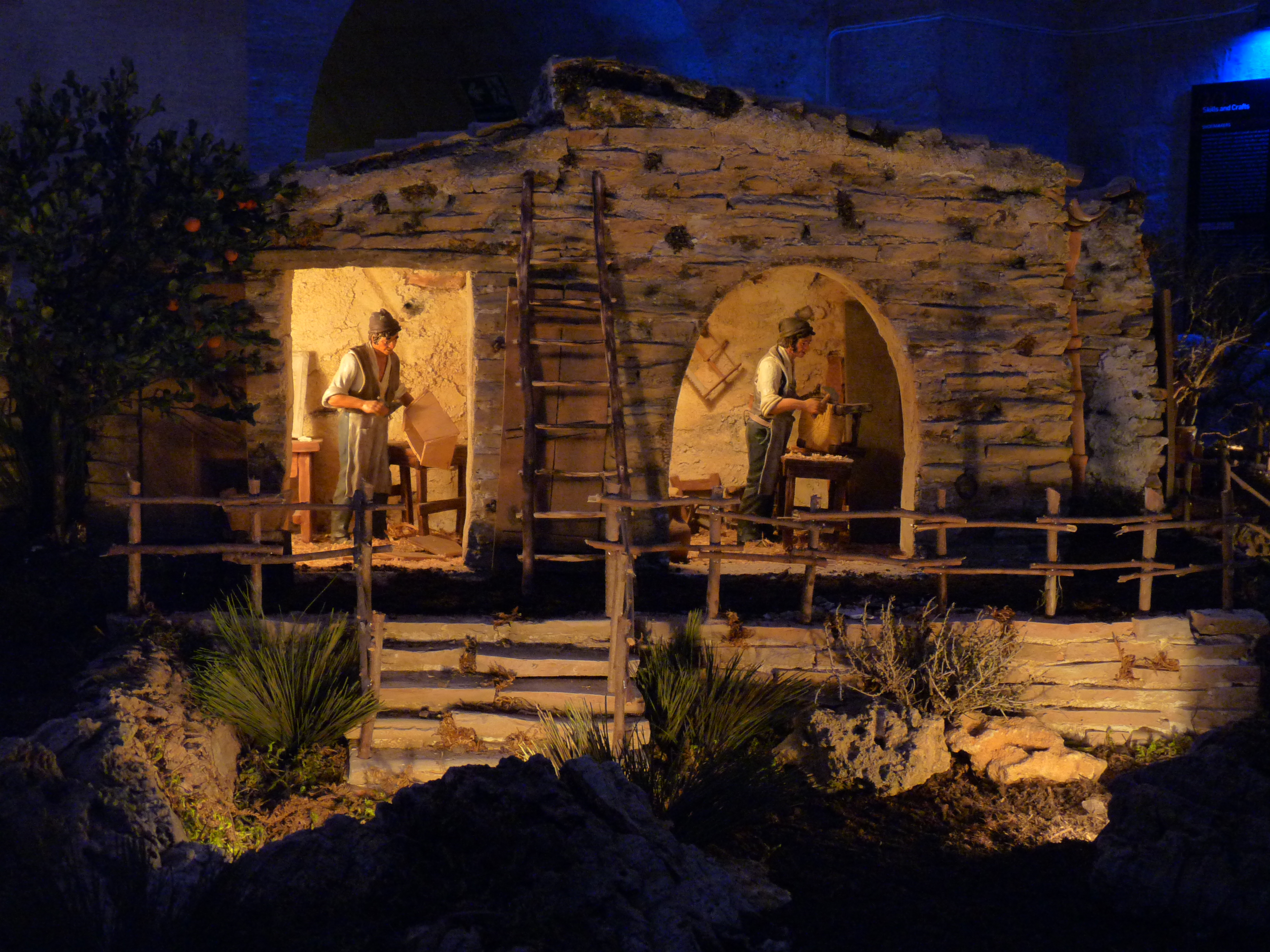
“The setting up of a crib during the Christmas season has become a worldwide tradition. However probably, few are aware that by doing this, they are reproducing a custom that was originated by St Francis D’Assisi in the 13th century,” told me Francesca Cannavò, the Curator of the Nativity Museum which is located in the crypt of St Augustine’s Church in Old Mint Street, Valletta.
“The main aim of this museum is to promote a deeper understanding and meaning regarding the nativity of Jesus and how this sacred event has been represented artistically during all these years by various artists,” explained Andrea Consalvo Rifici, the marketing manager.
Indeed, during these last months, the ambience of this huge crypt has been completely transformed into a landscape which instills the perception of being absorbed back in time, right to the period of this holy nativity.
“We want the visitors to walk around this place and to meditate about what was happenning in the days before baby Jesus was born and also what took place soon after.”
Various panels with interesting information accompany the visitors throughout this journey which takes them deep within the old crypt in search of the revelation of the Christmas story. Meanwhile, heavenly music engages the visitors and immerses them into the sanctity of this experience.
“In the old days, many of the people were uneducated and so they could not read the scriptures. Therefore, the Church set up various plays and commissioned many paintings in order to create a visual narrative with which the people could comprehend certain episodes in Jesus’ life.”
In fact, beautiful reproductions of renowned artistic works that portray the nativity scene compliment and enhance the significance of this museum, as the visitors can enjoy and absorb the different interpretations that were effected by remarkable painters such as Leonardo da Vinci, Giotto, Tiziano, Rubens, Botticelli, Carvaggio, Fra Angelico, and Hugo van der Goes.
“It is believed that these representations of the nativity have inspired St Francis of Assisi to compose the first crib which he set up in a cave. Eventually, this idea was so much appreciated by the people that they decided to produce their own cribs in order to possess the blessed nativity scene within their homes. As years passed, people continued to develop this concept by designing new ways of expressing this remarkable episode.”
A circular room within this crypt has been selected to present a set of artistic scenes which manifest the main events that are relative to the birth of Jesus; such as that of the Annunciation, the dream of Joseph, Mary’s visit to a pregnant elder Elizabeth, the search to find a place for Mary to give birth and the hasty escape to Egypt.
“These set ups have been designed in Sicily in order to decorate this museum. The figurines were made by Vincenzo Velardita in Caltagirone whereas the scenography was realized by Gigi Genovese in Catania. We tried to keep these scenes as simple as possible in order to reflect the modest nature that Jesus Himself chose for his own birthplace.”
Certainly, the principal attraction in this nativity museum is the huge crib with its numerous mechanical figures.
“This crib is the work of Salvatore Milazzo from Caltagirone. We are proud to say that it has been admired in several countries and that it has received various prestigious awards. This year, we decided to introduce it to Malta because we are aware that the Maltese people are deeply devoted to the nativity of Jesus. Moreover, we wanted to share our Sicilian culture with the Maltese people since there are many similarities between our culture and traditions.”
Milazzo’s work is definitely a work of art as it embraces within it all the skill of the renowned Caltagirone masters of this trade. The forty square metre crib has been decorated with a typical Sicilian country lansdcape of the 1800s which includes also a number of workshops of trades which do not exist any longer.
Meanwhile, this museum incorporates within it also a number of locally made cribs that were provided by members of Friends of the Crib (Malta).
Interestingly, this nativity museum which has opened its doors for the public in November will not close after the Christmas season and it will remain available to visitors all throughout the year.
“The concept behind the creation of this nativity museum in Malta is to heighten the experience of Valletta 2018 both to local and to foreign visitors, by blending together the culture of this island and that of Sicily.”
(This article was published in CHRISTMAS TIMES Magazine which was issued with The Times of Malta dated 13th December 2014)
Travelogue
Archives
| M | T | W | T | F | S | S |
|---|---|---|---|---|---|---|
| « Jan | ||||||
| 1 | 2 | 3 | 4 | 5 | 6 | 7 |
| 8 | 9 | 10 | 11 | 12 | 13 | 14 |
| 15 | 16 | 17 | 18 | 19 | 20 | 21 |
| 22 | 23 | 24 | 25 | 26 | 27 | 28 |
| 29 | 30 | |||||
Recent Posts
- A MATTER OF FATE
- MALTA’S PREHISTORIC TREASURES
- THE MAGIC IS IN THE DETAIL
- THE SELLING GAME
- NEVER FORGOTTEN
- Ġrajjiet mhux mitmuma – 35 sena mit-Traġedja tal-Patrol Boat C23
- AN UNEXPECTED VISIT
- THE SISTERS OF THE CRIB
Comments
- Pauline Harkins on Novella – Li kieku stajt!
- admin on IL-KARNIVAL TRAĠIKU TAL-1823
- Albert on IL-KARNIVAL TRAĠIKU TAL-1823
- Martin Ratcliffe on Love in the time of war
- admin on 24 SENA ILU: IT-TRAĠEDJA TAL-PATROL BOAT C23